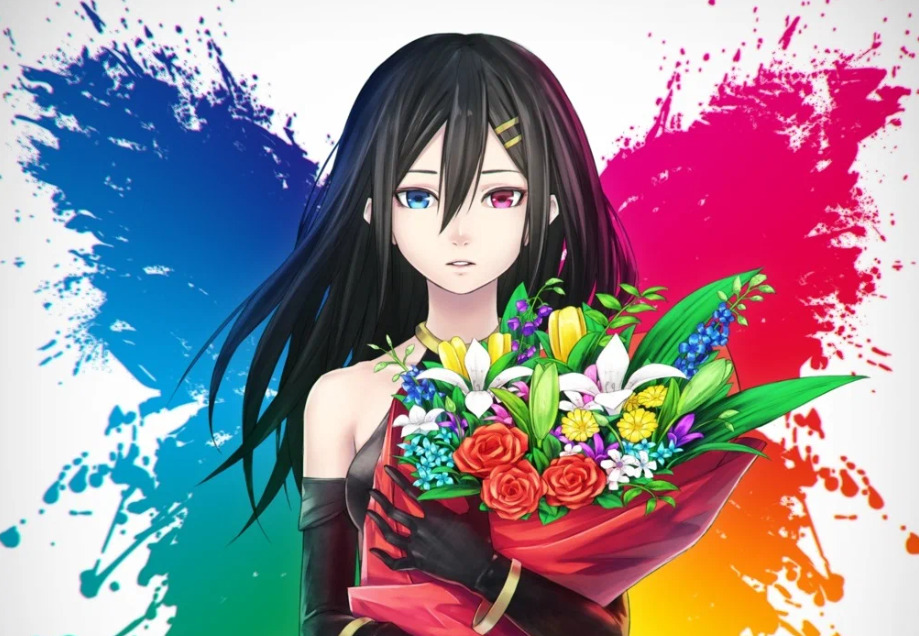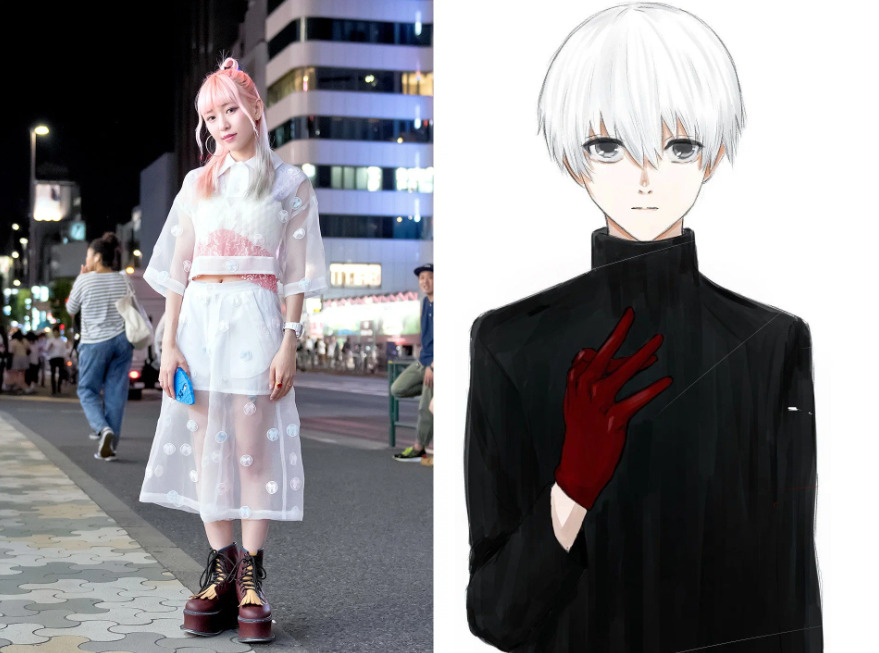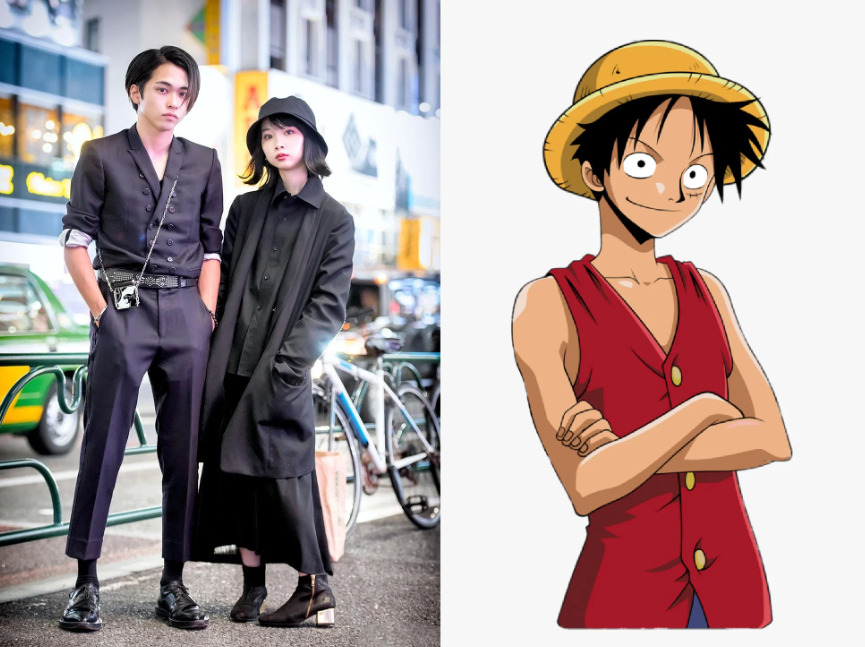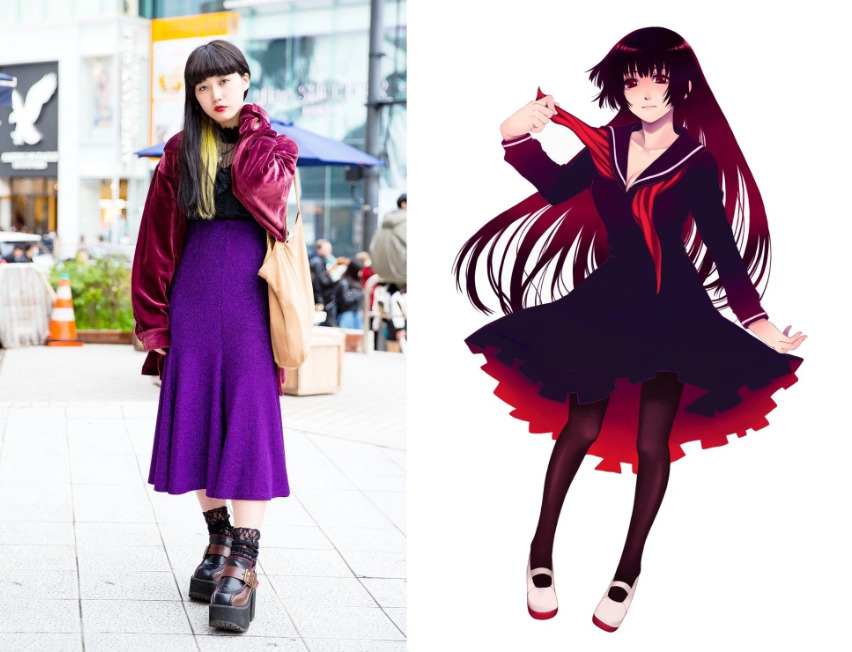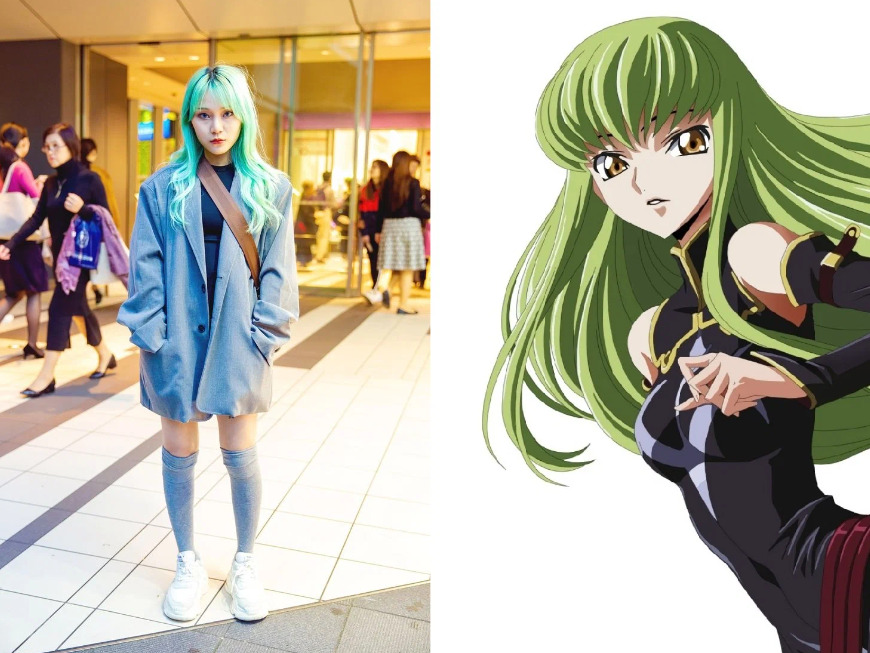What does the color palette of anime characters say?
What the color palette of anime characters says about: the meaning of shades in Japanese culture.
The interpretation of shades can be viewed from different angles: one color can have both the same meaning and completely different, depending on the context.
Most of the names of colors in Japan are derived from those elements, objects, plants or animals from which the corresponding dye was produced. Sometimes the name could be formed on the basis of the color of the object itself, and since in the course of history the Japanese borrowed many trends when they contacted other countries, the meanings of the colors were regularly changed. The meaning of this or that shade in Japan has deep roots in traditional culture: according to the canons, the shades in clothes, on store signs, or even the color of the eyes and hair of anime characters reflect not only the aesthetic component, but also reveal the depth of their nature: emotions, feelings, character , symbolism.
It is worth dividing the symbolism of flowers in Japan into two types: traditional colors and all the rest. Traditional Japanese colors are those most commonly used in Japan for costumes, paintings, and other crafts since ancient times. Such a concept appeared in 603, when the Regent Prince Shotoku (Japanese: 聖徳太子, ~ 574 – ~ 622) introduced a system called the Table of Twelve Ranks. It was based on the five elements of Chinese natural philosophy Wu-hsing, which determines the main parameters of the universe. The Shotoku system determined the color of the costume for each rank, and also introduced kinjiki (forbidden colors in Japanese), which were allowed to be worn only by the highest nobility. The names of the ranks were borrowed from Confucian ethics: wisdom, faith, humanity, grace, courtesy, duty. Each of them was divided into senior and junior, and depending on this, a certain color was assigned. The permitted colors were called yurushiiro, and they could be worn by people of any status and position.
Traditional colors
The white color in Japan symbolizes purity and divinity, therefore it is primarily associated with the sacred world and is considered the color of death. The origins of this perception lie in mythology, according to which the white color is associated with the cult of ancestors. In the Japanese funeral rite, it is not without reason that the deceased is dressed in snow-white clothes – this is a sign of his initiation into a new life.
Today, the Japanese prefer to wear white, who like lightness, neatness and independence. If we consider the color context in Japanese animation, we can see that negative characters are more likely to have blond hair or eyes than the protagonists, and solid snow-white shades predominate in the attributes of a true villain. Such a technique is most often used to emphasize the supernatural abilities, the sacred image of the hero, his belonging to one or another higher creature.
The black color for the inhabitants of the Land of the Rising Sun is no less important: it symbolizes an original orientation, unlike the ideas of Western countries, since it has the opposite meaning and is the color of nobility, happiness and freedom.
The dark color of clothing is most common among the Japanese, as well as the color of the hair or eyes of anime characters. But the reason is not only that black is the main hair color of the entire Japanese nation, things are a little different: black is a sign of restraint, calmness, intelligence and determination. In combination with brighter shades, it can carry a different semantic load, but in itself is considered a traditional display of endurance, clarity and harmony.
Warm colors are very important in Japan, because red, orange and yellow are associated with the concept of the divine origin of an entire people. It is believed that representatives of the Japanese imperial dynasty are direct descendants of the Sun Goddess Amaterasu (Jap. 天照大御神), from which we can conclude how significant solar semantics is in national culture. But also each of the shades individually can carry its own meaning. Let’s say medium scarlet (jap. nakabeni) is “the color of red plum”. It is a shade of red, but not the same as, for example, pale scarlet (arazome) which means “sakura blossom” and so on.
The red color symbolizes for the Japanese to know, which evokes a feeling of universal admiration and has authority, as well as justice, valor, magic and witchcraft.
Shades of red, obviously, attract attention much more than others, because it is chosen by people with a strong-willed character who want to emphasize their own individuality and expressiveness. You can even notice that in most anime and manga, various wizards and sorcerers are portrayed as red-haired, usually with a purposeful, stubborn and short-tempered character. Colorful colors often belong to the characters, which have a greater influence on the development of the plot and the turn of the story.
Orange in Japan symbolizes wealth, abundance and prosperity, while yellow or gold symbolizes light, mercy and divine power. In ancient times, the Japanese even made offerings to the Gods in the form of orange or yellow fruits, because. they wanted to get a good harvest, and sometimes just in gratitude for the already acquired gifts of nature. Part of this custom continues today.
By the way, an interesting fact of the symbolism of the yellow color is that today it symbolizes among the Japanese a call for increased attentiveness and caution. For example, elementary school students must wear yellow hats while moving around the city so that drivers can easily notice them. The Japanese, who choose red and golden shades in clothes, are attentive, cheerful, responsible and optimistic. And these colors are also a characteristic indicator by which mangakas and animators distinguish a certain hero from the total number of characters, since usually these personalities are bright, ambitious, noisy and cheerful.
The blue color for the inhabitants of the Land of the Rising Sun symbolizes the other world, depth, mysticism and all sorts of connections with esotericism. Once upon a time, it was considered the color of ordinary people, since in the old days, the shogunates forbade anyone to wear colorful clothes, except for respected gentlemen. Indigo was the most accessible natural dye at that time, and therefore the kimonos of the lower strata of the population were dyed blue.
Today, this color is chosen by the Japanese, self-confident, who do not have great difficulty finding a common language with anyone, but with a bit of skepticism towards the world around them. In Japanese animation and manga, with blue hair or eyes, they mainly draw antagonists who inspire fear and danger. It can also be strong-willed characters with a difficult character or a difficult life situation, directly related to the secrets of the universe, parallel worlds, charms or Oni.
Purple color for the Japanese symbolizes peace, serenity and nobility. Since ancient times, its shades reflect reliability and devotion, and since purple was mainly associated with samurai, the meaning was success and good luck, which are shared by a warrior faithful to the samurai code, putting on armor. Due to the rarity of the dye, purple expressed originality and uniqueness, and the lilac shade later became a symbol of people of high status.
Today, it is the choice of clothing for the Japanese, who are probably more predisposed to authority than others, but at the same time they want to remain in the shadows and live by their own rules. But in anime and manga, the emphasis in purple is placed on characters who are prone to violence, including psychological, or are themselves subjected to it. The same shades can reflect the ambiguity of the character, his detachment, specificity and originality.
Other colors
The green color in Japan is similar in symbolism to blue, because, even if they are written in different words (Jap. 緑 – green; 青 い – blue), their meaning differs little from each other. These colors represent youth, the birth of a new life, spring and innocence. In some interpretations, green and blue hues can reflect the power of plants, nature and water.
In clothes, they are preferred by people who are open and friendly, striving to be in harmony both with the outside world and with themselves. They want to show anime characters with green, turquoise or blue hair as extraordinary, having a clear opinion on everything and their own value system. Such characters are usually calm, up to the manifestation of phlegmatic moods, but at the same time they are extremely disciplined, strict and stubborn in certain matters. Mangakas like to symbolize the genius and omnipotence of the hero with blue or green colors.
Pink color in the Land of the Rising Sun is associated with the feminine, means purity, perfection, kindness and peacefulness. No wonder the shades of pink are most often used by Japanese marketers, because they express shyness, tenderness and “cuteness”, which many associate with modern Japanese culture, and which even the Japanese themselves actively popularize.
Many people today prefer to wear pink to look more youthful and pretty, and characters in Japanese animation, whose color scheme focuses more on such shades, are often described as “kawaii”. It is interesting that in the past the term “kawaii” was translated as “causing pity”, but today it is a direct personification of everything sweet and tender. Usually pink eyes, hair or shades of clothes of anime characters indicate an inner core with external innocence and purity. Such a hero can be charming, childish and get into awkward situations more often than others, but at a crucial moment he will definitely gather all his will into a fist and rebuff the difficulties that have piled up.
The brown color for the Japanese symbolizes sadness and poverty, since since ancient times the clothes of the beggars were just such a shade. At the same time, it is the color of the soil and the root crop, which embodies reliability, strength, inconspicuousness and naturalness.
This color often conveys unsophisticated intentions, naturalness and triviality, which is why many Japanese people choose brown outfits as a symbol of convenience and simplicity. In manga, characters with a brown color are usually presented as not standing out from the crowd, close to the meaning of black in Japanese animation – most Japanese women, for example, if they dye their hair, it is in chocolate shades. Such heroes are simple-hearted and mediocre, in some context even boring and boring, they can be “just like everyone else.” Extras in anime are often drawn in just such colors, but in combination with other shades, brown can change the message conveyed by the author.
Gray color embodies the principle “beauty consists of little things”, symbolizing in Japan chastity, secrecy and unpretentiousness.
Previously, shades of gray were also often used in the attire of dignitaries, and in modern times, gray and silver colors interpret composure, composure, moderation and caution, because the Japanese, who prefer such things, want to appear secretive and unflappable, on their minds. In Japanese animation, characters with this hair color are often shown as ambiguous: on the one hand, prone to leadership, picky and wayward, and on the other, bizarre, provocative and rebellious.
Have you ever had similar associations while watching anime or reading manga? Maybe you also noticed the similarities between certain characters whose images intersect? Or maybe they drew a parallel when choosing clothes for characters in dramas? And what is your favorite color?

